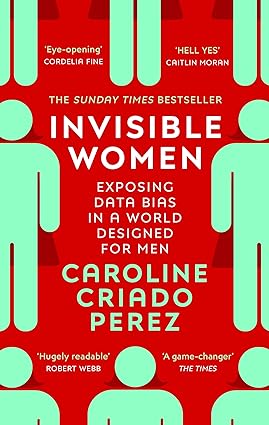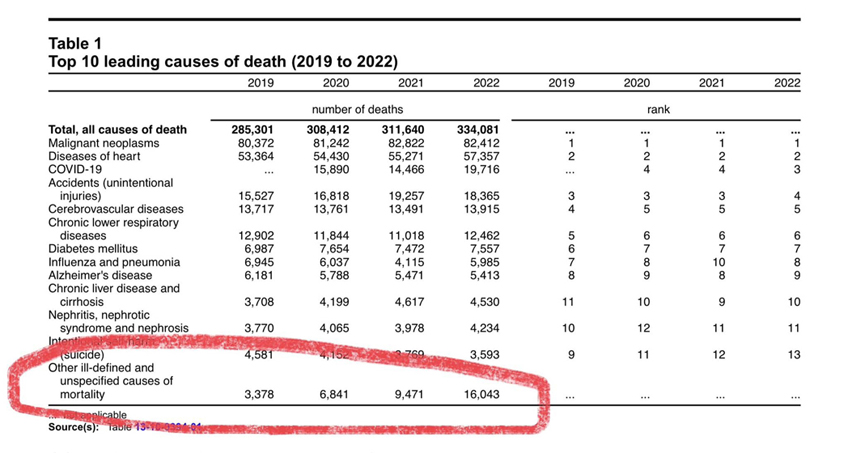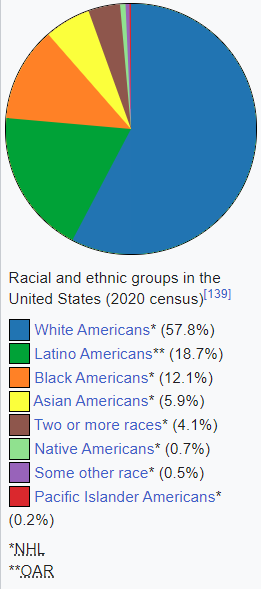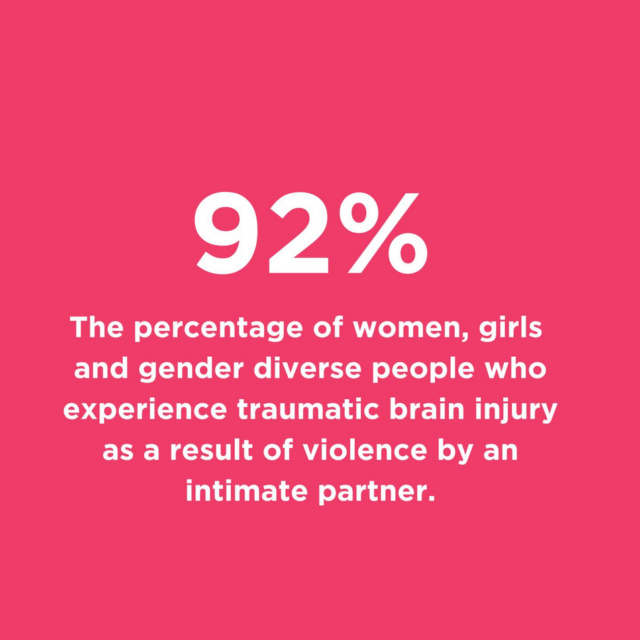There’s a reason “social science” is all horseshit, and that reason is: surveys. All of this stuff is based on surveys, and as it happens, I have quite a bit of experience of being on the receiving end of these. You see, back in grad school I was involved with a young lady in the Soash Department — I know, I know, but a man has certain needs, ya feel me? — and so I was always on call to take whatever goofy little tests they dreamed up, as a favor to her and her equally spastic hardcore Lefty friends. Anecdotes aren’t data, of course, but I’ve got a lot of anecdotes, and I can tell you — anecdotally — that there are two huge, self-reinforcing problems with these surveys: a) respondent pool, and b) design.
The respondent pool is, overwhelmingly, college kids taking them for class credit. Knowing what we know about Basic College Girls, who again are the majority of all college kids, is it any surprise that the results just happen to confirm the conclusions the slightly older, but no less Basic, Grad Student Girls were looking for? Throw in the design problem — questions about as subtle as “Do you think all races should be treated equally, or are you a monster?” — and you’ve got scientific proof that Liberals are good people and Conservatives suck.
Severian, “Is vs. Ought II: Moral Foundations Theory”, Rotten Chestnuts, 2021-04-20.
January 28, 2024
QotD: Never depend on “surveys” for real-world issues
January 23, 2024
QotD: Shakespeare was apparently a terrible writer, according to Bayesian analysis
When SBF (whose initials immediately joined those of MBS and JFK as being instantly recognizable) was first arrested, I immediately proposed a typology of financial swindlers with two distinct poles — though no doubt there is a continuum between them that somewhat reduces the elegance of my typology.
First there is the dull, seemingly steady, respectable type, instantiated by Bernie Madoff, who had just the kind of personal gravitas that inspired confidence in the cautious. “Yes,” the cautious type thought as he gazed into Madoff’s calm and wise face, “he is just the type to whom I can safely entrust my money. He knows, if anyone knows, how to make money fruitful and multiply.”‘ His very dullness obscured from the cautious man the fact that he, the cautious man, was as motivated by greed and lust for painless enrichment as the most reckless gambler; and no man wants to think that he is motivated by greed. That is a vice that motivates others, not oneself.
Second there is the flamboyant genius type. For more adventurous investors in search of quick returns, a man like SBF is just the one to follow. His refusal to comply with elementary social conventions, even his wild hair, stood guarantor of his genius. Those who followed SBF as the children followed the pied piper deluded themselves by the following false syllogism:
Geniuses are unconventional.
SBF is unconventional.
Therefore, SBF is a genius.(Actually, even his unconventionality was conventional. Convention is that from which no man can ever fully escape.)
The nature of SBF’s “genius” has come to light in his thoughts of Shakespeare, against whose genius he applies statistical reasoning:
I could go on and on about the failings of Shakespeare … but really I shouldn’t need to: the Bayesian priors are pretty damning. About half the people born since 1600 have been born in the past 100 years, but it gets much worse than that. When Shakespeare wrote, almost all Europeans were busy farming and very few people attended university; few people were even literate — probably as low as ten million people. By contrast there are now upwards of a billion literate people in the Western sphere. What are the odds that the greatest writer would have been born in 1564? The Bayesian priors aren’t very favourable.
One could have a great deal of fun with this argument, for example by proving statistically that Isaac Newton was not one of the greatest physicists who ever lived, and indeed could never really even have existed, because the number of people in his time who could do simple arithmetic was so exiguous. How could he, then, together with Leibniz (another impossibility), have invented the calculus?
By contrast, we could also prove that we are living through a golden age of literature (as of every art) because there are now so many people who know how to write. Of course, our painting must be best because, comparatively speaking, our materials are so cheap and within the range of most people, all of whom have the time to take up painting. Think of how poor Spain was when Velasquez was painting! In Vermeer’s day they didn’t even have flush toilets! How, then, could his paintings be beautiful? Basquiat’s paintings must be much better because now we have electric light.
How could Dickens have been so funny when the infant mortality rate was so high and the life expectancy so low? Therefore, he was not funny. As for Mozart, he didn’t even have an electronic amplifier to his name, so how could his music have been any good? He hadn’t even heard of rap.
One swallow doesn’t make a summer, of course, or one vulture a flock, but one cannot help but remark that SBF was not some poor child who managed, by hook or by crook, to crawl out of a noisome slum, but the child of two professors at Stanford University (admittedly of law) who was himself expensively educated and who was, by the standards of 99.999 percent of all previously existing humanity (to use an SBFian type of statistic), extremely privileged. He was of the elite. His immortal thoughts on Shakespeare would not have been possible without his education, for they certainly would not have occurred to — shall we say — an illiterate illegal immigrant from El Salvador or Honduras.
No, it requires many years of training to come up with arguments such as his. And this in turn raises the question of what is going on in schools and universities (if, that is, SBF is not completely sui generis) that their alumni end up by saying things that make the pronouncements of Azande witch doctors look like those of the latest science. Perhaps — and let us hope that — SBF is not typical of his breed.
Theodore Dalrymple, “The Literary Financier”, New English Review, 2023-10-21.
January 17, 2024
QotD: Did Hari Seldon live in vain?
Both cliodynamics and psychohistory assume these differences and problems “come out in the wash” over a long enough period and a big enough sample. It doesn’t take much of a counterfactual thought experiment about how small changes by individuals could lead to enormous historical differences to see that they don’t. The defense that cliodynamics only deals in probabilities is little comfort here: in fact the apparent randomness (which one may argue is merely complexity on a scale that is beyond simulation) swallows the patterns. One could easily argue, for instance, that the extremely unlikely career of our fellow Temujin is a necessary cause (albeit merely one of many, several of which might be considered deeply improbable) for the fact that all commercial pilots and air traffic controllers worldwide have to learn a form of English (which one may well assume has its own structural knock-on effects in terms of the language used for business and from there the outsized cultural impact of English-speaking countries).1 No one in 1158 was likely to have supposed that English – a language at that time not even spoken by the English nobility (they spoke French)! – would become the first truly global lingua franca (and arguably the only one, though here caveats may overwhelm the claim) and thus the language of aviation. But that is precisely the kind of big structural change that is going to be really impactful on all sorts of other questions, like patterns of commerce, wealth, culture and influence.
Such complex causation defies general laws (even before we get into the fact that humans also observe history, which creates even more complexity) with such tremendous import from such unlikely events in an experiment which can only be run once without a control.
The other problem is evidence. Attempting to actually diagnose and model societies like this demands a lot of the data and not merely that you need a lot of it. You need consistent data which projects very far back in history which is accurate and fairly complete, so that it can be effectively compared. Trying, for instance, to compare ancient population estimates, which often have error bars of 100% or more, with modern, far more precise population estimates is bound to cause some real problems in teasing out clear correlations in data. The assumptions you make in tuning those ancient population figures can and will swallow any conclusions you might draw from the comparison with modern figures beyond the fairly obvious (there are more people now). But even the strongest administrative states now have tremendous difficulty getting good data on their own lower classes! Much of the “data” we think we have are themselves statistical estimates. The situation even in the very recent past is much worse and only degrades from there as one goes further back!
By way of example, I was stunned that Turchin figures he can identify “elite overproduction” and quantify wealth concentration into the deep past, including into the ancient world (Romans, late Bronze Age, etc). I study the Romans; their empire is only 2,000 years ago and moreover probably the single best-attested ancient society apart from perhaps Egypt or China (and even then I think Rome comes out quite solidly ahead). And even in that context, our estimates for the population of Roman Italy range from c. 5m to three to four times that much. Estimates for the size of the Roman budget under Augustus or Tiberius (again, by far the best attested period we have) range wildly (though within an order of magnitude, perhaps around 800 million sestertii). Even establishing a baseline for this society with the kind of precision that might let you measure important but modest increases in the size of the elite is functionally impossible with such limited data.
When it comes to elites, we have at best only one historical datapoint for the size of the top Roman census class (the ordo equester) and it’s in 225 BC, but as reported by Polybius in the 140s and also he may have done the math wrong and it also isn’t clear if he’s actually captured the size of the census class! We know in the imperial period what the minimum wealth requirement to be in the Senate was, but we don’t know what the average wealth of a senator was (we tend to hopefully assume that Pliny the Younger is broadly typically, but he might not have been!), nor do we know the size of the senatorial class itself (formed as a distinct class only in the empire), nor do we know how many households there were of senatorial wealth but which didn’t serve in the Senate because their members opted not to run for public office. One can, of course, make educated guesses for these things (it is often useful and important to do so), but they are estimates founded on guesses supported by suppositions; a castle of sand balanced atop other castles of sand. We can say with some confidence that the Late Roman Republic and the Early Roman Empire saw tremendous concentrations of wealth; can we quantity that with much accuracy? No, not really; we can make very rough estimates, but these are at the mercy of their simplifying assumptions.
And this is, to be clear, the very best attested ancient society and only about 2,000 years old at that. The data situation for other ancient societies can only be worse – unless, unless one begins by assuming elite overproduction is a general feature of complex, wealthy societies and then reads that conclusion backwards into what little data exists. But that isn’t historical research; it is merely elevating confirmation bias to a research methodology.
As noted, I have other nitpicks – particularly the tendency to present very old ideas as new discoveries, like secular cycles (Polybius, late 2nd century BC) or war as the foundation of complex societies (Heraclitus, d. c. 475 BC) without always seeming to appreciate just how old and how frequently recurring the idea is (such that it might, for instance, be the sort of intuitive idea many people might independently come up with, even if it was untrue or that it might be the kind of idea that historians had considered long ago and largely rejected for well established reasons) – but this will, I hope, suffice for a basic explanation of why I find the idea of this approach unsatisfying. This is, to be clear, not a rejection of the role of data or statistics in history, both of which can be tremendously important. Nor is it a rejection of the possible contributions of non-historians (who have important contributions to make), though I would ask that someone wading into the field familiarize themselves with it (perhaps by doing some traditional historical research), before declaring they had revolutionized the field. Rather it is an argument both that these things cannot replace more traditional historical methods and also that their employment, like the employment of any historical method, must come with a very strong dose of epistemic humility.
Psychohistory only works in science fiction where the author, as the god of his universe, can make it work. Today’s psychohistorians have no such power.
Bret Devereaux, “Fireside Friday: October 15, 2021”, A Collection of Unmitigated Pedantry, 2021-10-15.
1. For those confused by the causation, the Mongols are considered the most likely vector for the transmission of gunpowder from China, where it was invented, to Europe. Needless to say, having a single polity spanning the entire Eurasian Steppe at the precise historical moment for this to occur sure seems like a low probability event! In any event, European mastery of gunpowder led directly into European naval dominance in the world’s oceans (its impact on land warfare dominance is much more complex) which in turn led to European dominance at sea. At the same time, the English emphasis on gunnery over boarding actions early in this period (gunpowder again) provided a key advantage which contributed to subsequent British naval dominance among European powers (and also the British navy’s “cult of gunnery” in evidence to the World Wars at least), which in turn allowed for the wide diffusion of English as a business and trade language. In turn, American and British prominence in the post-WWII global order made English the natural language for NATO and thus the ICAO convention that English be used universally for all aircraft communication.
January 10, 2024
The unexpected rise in “Unknown Cause”
Mark Steyn rounds up some interesting details on that long-forgotten-by-the-media pandemic and corresponding heavy-handed government interventions that made things so much worse:
The obvious problem with appeals to authority, at least for anyone more sentient than an earthworm, is that across the western world the last four years have been one giant appeal to authority – and the result of mortgaging the entirety of human existence to the expert class is the rubble all around. Just for starters:
US scientists held secret talks with Covid ‘Batwoman’ amid drive to make coronaviruses more deadly
You don’t say! When would that have been? Oh:
…just before pandemic
Well, there’s a surprise!
A new cache of documents, obtained by Freedom of Information campaigners and seen by The Mail on Sunday, reveal the extent to which the controversial work at the Wuhan Institute of Virology was supported, and often funded, by America.
You got that right. Wuhan is the virological equivalent of a CIA black site in Pakistan: it’s where the Deep State goes to do the stuff it can’t do in suburban Virginia.
So how’s that working out for the planet? Way back in 2022, The Mark Steyn Show reported that “Unknown Cause” was now the leading cause of death in Alberta. According to the somewhat lethargic lads at Statistics Canada, taking eighteen month to catch up with yours truly, that same year it was the fourth leading cause of death across the entire country. “Unknown Cause” is rampaging from Nunavut igloos to the Hamas branch office in Montreal: Between 2019 and 2022, it was up almost five hundred per cent.
Does “Unknown Cause” have an awareness-raising ribbon like Aids or breast cancer? Are there any celebs who’d like to headline a gala fundraiser or do an all-star pop anthem?
Apparently not. Gee, it’s almost as if taking too great an interest in “Unknown Cause” can lead to a bad case of cancer of the career. Nevertheless, the official StatsCan numbers are, to put it at its mildest, odd. By the end of 2022, Canada was one of the most jabbed nations on earth, with a Covid vaccination rate of ninety-one per cent, the highest in the G7, by some distance (UK and US both at eighty per cent).
And yet, if these government numbers are to be believed, something very strange happened. In the most jabbed member of the G7, Covid deaths went up. As The Western Standard‘s Joseph Fournier noticed, while almost nobody else did, Covid deaths per annum across the Deathbed Dominion shot up 25 per cent from the days of curfews, and arrests for playing open-air hockey:
2020 15,890
2021 14,466
2022 19,716
So, in Jabba Jabba Central, more people died of Covid in the most recent annual round-up than at the height of the pandemic. In fact, on those numbers, Canada has yet to reach “the height of the pandemic”. Here’s another striking feature – again, direct from Statistics Canada:
During the first year of the pandemic, older Canadians (65 years of age and older) accounted for 94.1% of COVID-19 deaths, while those aged 45 to 64 years accounted for 5.3%. In 2021, while the number of COVID-19 deaths among individuals aged 65 years and older (82.0%) remained high, the proportion of deaths among those aged 45 to 64 years nearly tripled to 15.5%.
So, in the most vaxxed nation of the G7, middle-aged persons account for three times the proportion of Covid deaths than they did at “the height of the pandemic”.
Like I said: odd.
Canadian life expectancy? Down. Oh, just by four months or so. But that’s three times the size of last year’s drop.
Excess mortality? Indeed: In 2019 the age-standardised death rate was 830.5 per 100,000 people. In 2022 it was 972.5. As I’ve pointed out a gazillion times on telly, that’s the opposite of what’s meant to happen post-pandemic: After the Spanish Flu, the mortality rate fell because people who would otherwise have died in 1924 had already died in 1919. That phenomenon is visible in Eastern Europe, but nowhere in the Dominion of Death.
Last year I mentioned en passant to my friend Naomi Wolf that the Covid vaccines were beginning to remind me of the scandals of her old chum Bill Clinton: one such can do a politician in, but, if you have (as Slick Willy did) a multitude of ’em, who can follow it all? If Pfizer, Moderna and AstraZeneca just caused, say, myocarditis, maybe people would find it easier to focus on. Instead, it causes myocarditis in men and infertility in women and, if you manage to dodge the latter, the mRNA shows up in newborn babies; it brings on Guillain–Barré syndrome and Ramsay Hunt syndrome and lightning-speed turbo-cancers. Alternatively, you could get a dose of the SADS and drop dead on stage or on the footie pitch, or at home watching the telly. It’s a lot to keep track of.
Or maybe, as in Alberta, you just die of … whatever. And nobody cares to find out.
January 5, 2024
QotD: Hong Kong and the “league table” of world economic freedom
The Fraser Institute issued its annual Economic Freedom of the World report last week. It didn’t get much attention; it never does these days. Considered as a league table, the report is very boring and static, and makes poor copy.
The same countries typically appear at the top from year to year, and are separated mostly by microscopic, irrelevant differences. For 2017, whence the data in the new report come, Canada sat in eighth place just a hair above Australia and a hair below the U.K. Ascending to the top, we meet other siblings of the English-speaking world, Ireland and the U.S.; the Swiss Republic stands in its typical fourth; the relatively wild child of the Commonwealth, New Zealand, remains third; and then, in the top two places, you have the twin beacons of radical economic freedom, Singapore and Hong Kong.
Ah, yes, Hong Kong. The Special Administrative Region seems, for now, to have won a short-term victory in its struggle to preserve the conditions of its reunion with mainland China. This has not, ostensively, been a struggle over economic freedom per se, but it is not a coincidence that the rioting ultimately originated in a conflict over bookstores. It is mighty hard to draw a line where “economic” freedom stops and purely personal or civil freedoms begin, and the design of the index reflects this. It has a large basic rule-of-law component, includes mobility rights under the free trade factor, and takes points away for imposing military conscription. (This is surely a tiny tribute to the shade of Milton Friedman, who was one of the originators of the index.)
Even if Hong Kong’s immediate quarrel with China has been resolved for now, it is only a manifestation of what is likely to be a longer game. Clever columnists always like exoticizing talk about how the Chinese think in generations, but when it comes to Hong Kong, the cliché has weight. The 2019 riots, in showing how attached young HKers are to their distinct identity and to the English-speaking world, have revealed a nightmarish, even delegitimizing failure by the Chinese Communists. Mainland influence on Hong Kong education and politics has been used with the intention of prolonging and deepening the spirit of ’97; China, so often deemed the super-country of the future by admiring or fearful intellectuals, has tested the results of this effort in the eyes of the world and been made a laughingstock.
Colby Cosh, “Hong Kong’s still king in economic freedom rankings … for now”, National Post, 2019-09-17.
January 3, 2024
“One of the oddities of trans healthcare is that it masquerades as progressive”
In The Critic, Victoria Smith outlines the history of medical misogyny from Aristotle to modern-day “trans healthcare”:
The neglect of female bodies in medicine has a long history. The male-default bias, writes Caroline Criado Perez in Invisible Women, “goes back at least to the ancient Greeks, who kicked off the trend of seeing the female body as a ‘mutilated male’ body (thanks, Aristotle)”:
The female was the male ‘turned outside in’. Ovaries were female testicles (they were not given their own name until the seventeenth century) and the uterus was the female scrotum. […] The male body was an ideal women failed to live up to.
As Criado Perez notes, this bias lives on in male-centric medical research and undifferentiated treatment recommendations. “Women are dying,” she notes, “as a result of the gender data gap.” The belief that there is nothing specifically different about female people — cut a bit here, add a bit there, and we’re the same as men — has led to our symptoms being ignored and our pain dismissed.
Over the past few years, there have been a number of books — Elinor Cleghorn’s Unwell Women, Cat Bohannon’s Eve, Leah Hazzard’s Womb, to name a few — which have aimed to correct the imbalance. This is important both to save lives and ease suffering, and because, on a very basic level, it is insulting for half the human race to have our bodies treated as lesser, imperfect versions of a male ideal. We are more than that. We exist in our own right.
There are many in medicine, however, who still seem to think that Aristotle was right. Last week, for instance, the World Health Organisation announced it would be developing new guidelines into “the health of trans and gender diverse people”. While this might sound positive, as Eliza Mondegreen notes, many of those leading the development group hold highly regressive views about sex, gender and bodies. It is only possible to believe that a person could change sex if you have not given much consideration to the “second” sex at all.
One of the oddities of trans healthcare is that it masquerades as progressive despite having evolved from — and continuing to rely on — an understanding of sex difference which is regressive, male-centric and superficial. Because no one wants to admit it, this has led to a plethora of articles along the lines of “Here’s Why Human Sex Is Not Binary” and “Sex Redefined: The Idea of 2 Sexes Is Overly Simplistic“. While these claim to be adding extra detail and nuance to our understanding, what they do in practice is revert back to privileging the male default. Sex is all so varied, all so different, they tell us, we might as well not bother setting any standards for what counts as “femaleness”. We’re all just human, aren’t we? Only some bodies have tended to be considered more human than others. Rebranding “the male default” “the sex spectrum” is a sneaky way of insisting, once again, that female people are nothing more than males with a few minor tweaks.
This is the new medical misogyny, built on the back of the old version. Unfortunately, because it positions itself as anti-conservative and even pro-feminist, many writers of texts that address the old version feel obliged to go along with the new. It’s not difficult to see why. Who wants their work to be undermined by bad faith accusations of transphobia? Isn’t it easier just to say “it’s clear that trans women are women” — as Bohannon has done — on the basis that at least this will enable you to challenge the centring of male bodies elsewhere?
December 9, 2023
All those (officially unexplained) “excess” mortalities
Mark Steyn discusses European and Antipodean statistical reports that echo what Maxime Bernier was talking about the other day on the as-yet officially unexplained huge rise in “excess mortality” since the Wuhan Coronavirus pandemic:
We are now three years into the administration of the Covid vaccines, and we have many startling statistical anomalies, including the most basic one of all: a huge mound of extra corpses. Per the EU’s official statistics agency:
Among the eighteen EU Member States that recorded excess deaths, the highest rates were in Cyprus (13.9%), Finland (13.4%), the Netherlands (12.7%) and Ireland (12.5%).
Those percentages are sufficiently high that in the Netherlands, formerly one of the healthiest nations on earth, they’re reducing life expectancy. The ongoing excess deaths are at odds with the normal post-pandemic pattern, such as the Spanish Flu a century ago. The intro to this new scientific paper sets out what’s meant to be happening:
Our approach takes into account age and gender, but also under-mortality that you would expect after a period of excess mortality.
“Under-mortality” occurs because, if the Spanish Flu killed you prematurely in 1920, you weren’t around to die when you otherwise would have done in 1924. Hence, excess mortality is followed by under-mortality. So:
If this under-mortality does not seem to be happening, it is actually hidden excess mortality.
That’s an important point. What Eurostat identifies as an excess mortality rate in Ireland of 12.5 per cent is, as a practical matter, actually higher – because it should be measured against not the pre-Covid baseline but the under-mortality one would have expected four years on. So persistent excess mortality is deeply weird, and, unlike those killed by the virus (where the median age of death by Covid is above most developed nations’ life expectancy), the extra deaths, as we have discussed on The Mark Steyn Show, are skewed towards the young and middle-aged:
We note that excess mortality in the Netherlands remains consistently high during 2020-2022 and has shifted from high to low age and towards men.
In other words, it’s not a general trend of excess deaths, but something more particular. Which, in a normal environment, would suggest something particular is causing it. Aside from excess deaths in “low age”, we also have excess deaths at no age – the babies who aren’t being born. The western world’s jabbed and re-jabbed citizenry has seen a catastrophic slump in newborns. Scandinavia:
The whole region reported sharp declines in fertility rates in 2022. Finland had the lowest fertility rate of all Nordic countries, 1.32 children. This is also the lowest Finnish rate since 1776 when monitoring of fertility rates first started.
Incidentally, that Finnish rate – of 1.3 children per woman – is what demographers call “lowest-low fertility”, from which no society has ever recovered.
Fortunately for officialdom, there was enough Covid circulating in Finland, Ireland, the Netherlands, etc that the ever higher mountain of corpses can be shrugged off as most likely “Long Covid” or maybe, if necessary, “Extra-Long Covid”. In the Antipodes, they can’t get away with that. Australia and New Zealand enacted some of the most draconian public-health measures on the planet, and in effect quarantined their entire nations. As a result, pre-Omicron they had all but negligible accounts of Covid. But they obediently submitted themselves to the mass vaccination regime. And, whaddaya know, they too have extraordinary rates of excess death.
Clare Craig, a favourite guest of The Mark Steyn Show, has published a detailed analysis of the post-vaccination years Down Under. It makes for sober reading.
In 2021, for example, they had officially 1,224 deaths from Covid.
But also in 2021 – the first full year of the vaccines – they had 876 excess deaths from ischaemic heart disease alone. Plus another 583 excess deaths from other cardiac diseases.
Death by ischaemic heart disease had been in decline in Australia in the pre-vaccine years, but, having shot up in 2021, it went up even further in 2022. (Same trend with strokes.) So, having shut down the country for those 1,224 Covid deaths, you would think the public health bureaucracy might show a smidgeonette of interest in those 1,359 excess cardiac deaths.
But apparently not.
Now, across the Tasman Sea, we have a Kiwi whistleblower, Barry Young, who has released an avalanche of data with some quite disturbing takeaways that I referenced on Wednesday’s Clubland Q&A. I was careful to qualify my remarks with a lot of “ifs”, but our friend Norman Fenton, Professor of Risk Information Management at Queen Mary University, has taken a look and The Conservative Woman has published his findings. I see that on the Internet the kneejerk reaction was that Mr Young had simply leaked a lot of vaccination stuff from the old folks’ homes where the Covid centenarians would have died anyway. So it’s a biased sample.
In reality, it does not appear to be a “sample” at all:
[Steve Kirsch] says that there are widespread misunderstandings about the data and it is not biased. For a start he says that the dataset is the complete set of ‘pay-per-dose’ vaccination records and therefore there is no biased sampling at all. He says:
“The people within the group is representative of the total population. There are 2.2 million people in the group, and there are 4 million records. Each of those records is a Vaccination Record.”
2.2 million is over forty per cent of the population of New Zealand. That’s some “sample”. Nevertheless, Professor Fenton is being scrupulously cautious:
Even accounting for inevitable “survivor bias” (the more jabs a person gets, the quicker they are likely to die after their last jab) there was some evidence of increased risk the more doses a person gets. Moreover, given Steve’s comments about the datatset being the complete set of “pay-per-dose” vaccination records, this conclusion seems robust even if there were a biased proportion of vaccinee deaths in the dataset. Also (as per my above quote in Steve’s presentation) I felt that the data provided further support for the hypothesis that the vaccine was increasing the mortality rate in the older population (something which we had already concluded based on the most recent ONS data).
It’s interesting that such questions never come up at Britain’s official “Covid inquiry” which is increasingly risible in its palpable determination to find that the only mistake that was made was not to lock down harder and faster.
The other takeaway mentioned by Professor Fenton is the fatality rate of individual batches. Take a look at this handy graph:
I suppose it would be possible to argue that all 711 jabs of Batch #1 were administered to residents of the Shady Acres Retirement Home for Centenarians with Stage Four Ebola. But it’s difficult to make the same case with Batch #62 which went into the arms of 18,173 New Zealanders and killed 831 of them. Which, all by itself, is two hundred times the country’s official death toll from the vaccines. Which is to say, according to His Majesty’s Government in Wellington, precisely four Kiwis are dead of the vax.
December 7, 2023
Burying the lede … and the victims
Maxime “Mad Max” Bernier sent out a fundraising letter to PPC supporters that included some disturbing new data from Statistics Canada:
As usual, the biggest news in Canada is being ignored by all of our crooked establishment politicians and the dishonest corporate media.
Last week Statistics Canada released a report on deaths in Canada (causes of death, overall life expectancy, etc), which include the latest data from 2022.
I’m not a doctor, a scientist, or even a statistician, but when I saw the table below, a few things jumped out at me.
First, deaths related to covid-19 (check the fourth line) were at an all-time high in 2022!
Can you believe that? There were more covid deaths in 2022 than the two years before.
And yet that same year saw the end of mask mandates, vaccine passports, and most covid measures.
For two years the elites blasted us with propaganda and warped our society around this mild illness, but when deaths were rising, they were silent. Bizarre!
To be clear, I am not advocating for any of these unnecessary draconian restrictions to return, I am just demanding some honesty and consistency from our morally corrupt politicians, public health officials, and media!
It has never been so obvious that covid restrictions were not scientific, they were just about politics and control.
But the most disturbing part is what I have circled at the bottom of the table. Deaths with “ill-defined or unspecified causes” have been steadily increasing since 2020.
These deaths have almost TRIPLED since 2020 from 6,841 to 16,043 in 2022.
What could be causing this? What happened in 2021 that could have caused this explosion of unexplained deaths over the last 2 years?
An experimental pharmaceutical product was rushed to market and forced on Canadian society, is what happened.
They told us it was “safe and effective” but over the last few years we have learned more and more about how that covid shot was neither.
Now more and more Canadians are dying from causes very likely related to the covid shot.
And where is the accountability?!
There is no admission of any possible error on the part of the government. On the contrary, it’s still encouraging everyone to get boosters!
There are no demands for an inquiry by the opposition parties to investigate the potential risks associated with the covid jab.
There are no investigative journalists trying to get to the bottom of one of the biggest medical scandals in Canadian history.
No! They’re just trying to sweep it under the rug and move on!
We can’t wait for the political establishment to hold itself to account. We saw throughout the covid years that the government, the opposition, and the media will all work together to protect themselves and each other.
And we can’t let them get away with it!
October 21, 2023
Paul Krugman lives in a fantasy world where “The war on inflation is over. We won, at very little cost”
Inflation continues to roar, despite calming words from government officials and legacy media pundits, as anyone who buys groceries could tell you. We long ago gave up going out for dinner, and now we’re very much living week-to-week and hoping the money lasts the whole month. Until my wife’s pension comes in late in the month, we’re utterly skint and trying to avoid spending any money at all. At Ace of Spades H.Q., Buck Throckmorton refutes the pro-government propaganda of, among others, Paul Krugman:

Monty used to use this image at Ace of Spades H.Q., and I certainly think it’s appropriate to include it here.
My household’s monthly grocery bill continues to steadily increase, despite the grocery list containing a pretty consistent basket of goods. We are spending more but not bringing home any more groceries. I am blessed that inflation has not forced us to cut back what we buy, but that hardly seems like an “expectation smashing” spending spree.
This article points out that several categories of retailers are not seeing any revenue growth at all, including clothing stores, electronics and appliance retailers, and sporting goods stores. In other words, these dry goods retailers are seeing declining unit sales as consumers are forced to redirect their decreasing purchasing power toward food, housing, and utilities.
Sales excluding auto and gas increased 0.6%, above estimates for a 0.1% increase compiled by Bloomberg.
That 0.6% monthly increase in spending annualizes to a 7.2% increase in spending over one year. As we’ve discussed often, the government’s published inflation figures are completely fraudulent, with the Bureau of Labor Statistics reporting that as of September the annual inflation rate is just 3.7%, down from 4.0% in May 2023.
John Williams’ website (shadowstats.com) tracks inflation using the same measurements used in the Carter era. The chart below is updated through May 2023, showing the official 4% inflation as reported by the US government (red line) versus inflation if calculated the same way it was calculated in 1980 (blue line.) Actual inflation is more than 12%, which is 3 times the official bogus government figure.
Therefore, the “expectation smashing” consumer spending that the media is reporting is not even keeping up with actual inflation, which means that consumers are bringing home less in the way of retail goods, despite the increased dollar amount they are spending.
This tweet below is not a parody. Nobel Prize winning
propagandisteconomist Paul Krugman actually stated that excluding food, energy and shelter, “The war on inflation is over. We won, at very little cost.”Thanks, Mr. Krugman, that’s very helpful. While inflation may be out of control on food, energy, and shelter, those are unnecessary discretionary expenditures. If people will just forego extravagances such as feeding their families and putting a roof over their children’s heads, they’ll do just fine in Biden’s economy.
September 12, 2023
Justin Trudeau should just stay away from India … it’s an ill-omened place for him
Paul Wells on the latest subcontinental pratfall of Prime Minister Look-At-My-Socks:
Later, word came from India that Justin Trudeau’s airplane had malfunctioned, stranding him, one hopes only briefly. It’s always a drag when a politician’s vehicle turns into a metaphor so obvious it begs to go right into the headline. As for the cause of the breakdown, I’m no mechanic, but I’m gonna bet $20 on “The gods decided to smite Trudeau for hubris”. Here’s what the PM tweeted or xeeted before things started falling off his ride home:
One can imagine the other world leaders’ glee whenever this guy shows up. “Oh, it’s Justin Trudeau, here to push for greater ambition!” Shall we peer into their briefing binders? Let’s look at Canada’s performance on every single issue Trudeau mentions, in order.
On climate change, Canada ranks 58th of 63 jurisdictions in the global Climate Change Performance Index. The country page for Canada uses the words “very low” three times in the first two sentences.
On gender equality, the World Economic Forum (!) ranks Canada 30th behind a bunch of other G-20 members.
On global health, this article in Britain’s BMJ journal calls Canada “a high income country that frames itself as a global health leader yet became one of the most prominent hoarders of the limited global covid-19 vaccine supply”.
On inclusive growth, the United Nations Conference on Trade and Development has a composite indicator called the Inclusive Growth Index. Canada’s value is 64.1, just behind the United States (!) and Australia, further behind most of Europe, stomped by Norway at 76.9%.
On support for Ukraine, the German Kiel Institute think tank ranks Canada fifth in the world, and third as a share of GDP, for financial support; and 8th in the world, or 21st as a share of GDP, for military support.
Almost all of these results are easy enough to understand. A small number are quite honourable. But none reads to me as any kind of license to wander around, administering lessons to other countries. I just finished reading John Williams’ luminous 1965 novel about university life, Stoner. A minor character in the book mocks the lectures and his fellow students, and eventually stands unmasked as a poser who hasn’t done even the basic reading in his discipline. I found the character strangely familiar. You’d think that after nearly a decade in power, after the fiascos of the UN Security Council bid, the first India trip, the collegiate attempt to impress a schoolgirl with fake trees, the prime minister would have figured out that fewer and fewer people, at home or abroad, are persuaded by his talk.
But this is part of the Liberals’ problem, isn’t it. They still think their moves work. They keep announcing stuff — Digital adoption program! Growth fund! Investment tax credits! Indo-Pacific strategy! Special rapporteur! — and telling themselves Canadians would miss this stuff if it went away. Whereas it’s closer to the truth to say we can’t miss it because its effect was imperceptible when it showed up.
In a moment I’ve mentioned before because it fascinates me, the Liberals called their play a year ago, as soon as they knew they’d be facing Pierre Poilievre. “We are going to see two competing visions,” Randy Boissonault said in reply to Poilievre’s first Question Period question as the Conservative leader. The events of the parliamentary year would spontaneously construct a massive contrast ad. It was the oldest play in the book, first articulated by Pierre Trudeau’s staff 50 years ago: Don’t compare me to the almighty, compare me to the alternative. It doesn’t work as well if people decide they prefer the alternative. It really doesn’t work if the team running the play think it means, “We’re the almighty”.
August 9, 2023
“Soon, they say, white America will be over”
At Oxford Sour, Christopher Gage considers the prominent media narrative about the inevitability of a “majority-minority” America within the next twenty years:
According to both the Daily Stormer and the Washington Post‘s Jennifer Rubin, white people will be a minority sometime in the 2040s.
In 2008, the U.S. Census Bureau projected that “non-Hispanic” white Americans would fall to 49 percent by the year 2042.
Since then, breathless media-politicos have taken the coming “majority-minority” as gospel. Some on the left celebrate the forthcoming date as the first day of their permanent dominance. Some on the right employ the doomsday date to encourage lunatics to rub out innocent people in a synagogue.
The 2020 census continued the theme. Breathless, lazy journalists took the clickbait. Ominously, they said the white population was “shrinking”. According to the Census Bureau, the white population shrunk to just 57.8 percent. Michael Moore did a little dance.
On white nationalist forums, users with names like WhiteGenocide88 were traumatised, and tooling up for war. No doubt, there are a few Robert Bowers with monstrous campaigns lurking around their skulls.
The problem with this theory, or so my Jewish puppet masters instruct me to say, is that it’s nonsense.
Firstly, the white population didn’t “shrink”. Not unless one believes the Jim Crow “one-drop” rule meaning one non-white ancestor renders one non-white. Secondly, the census ignores millions of white Americans who check the “Hispanic” box. These Americans more than cover any white decline.
According to the census, only those of one hundred percent white European ancestry are white. The Ku Klux Klan tends to agree.
For the first time on the census form, white people could include their varied multi-racial ancestry. Over 31 million whites did so. When we count these white people as white, the white population climbs to 71 percent. So, rather than “shrinking”, the white population has since 2010 increased by four million.
With a sensible definition of white, even by 2060, America remains around 70 percent white.
Professor Richard Alba, a sociologist at the City University of New York, says that definition means America remains a majority-white nation indefinitely — no doomsday clock, no murderous rampages, no primitive bloodsport over a faulty horoscope.
I’m no demographer but counting all white people as white people means there are more white people. I’m no sociologist either but revealing the increase in white people means fewer Robert Bowers keen to pump shotgun rounds into human flesh.
At Not the Bee, Joel Abbott is concerned about the obvious glee displayed by legacy media folks when they push the “replacement” story line:
You can practically feel the excitement here from the quivering fingers of the journalist that wrote this.
Ah.
Hmm.
Well, this is awkward.
See, I’m told this isn’t happening. White people aren’t being “replaced,” they’re just simply being phased out with a percentage that isn’t white at the same time all our institutions, companies, and leaders are pushing to eradicate things like “whiteness” and “white rage” in the name of equity.
For the record, I really couldn’t care less about the skin color of who lives in America. I care an infinite amount more about the spiritual worldview and values of my neighbor than whether their physical DNA gave them dark skin, blue eyes, or a big nose.
This is why I find it weird that the media keeps reporting, with abject glee, that people who look like me will be in the minority soon.
July 27, 2023
QotD: The causes of crime in Britain
I had noticed before that rain improves the behavior of young British people: It discourages them from leaving their homes. Rain is also the best, almost the only, prophylaxis nowadays in Britain against crime. Every afternoon for many years I walked between the hospital and the prison, in both of which great institutions I worked. In fine weather, seven or eight parked cars en route would have been broken into, the shards of their smashed windows sparkling prettily in the gutter as the sun caught their facets. But in the rain, not a single car was ever broken into. From this I naturally concluded that the fundamental cause of crime in Britain was sunshine. The statistics were unarguable.
Theodore Dalrymple, “Pray for Rain”, Taki’s Magazine, 2017-07-08.
July 8, 2023
During the pandemic, governments across the world chose the worst way to respond
In City Journal, John Tierney explains why western governments’ almost universal grabbing of extraordinary powers was the worst possible way to handle the public health crisis of the Wuhan Coronavirus:
Long before Covid struck, economists detected a deadly pattern in the impact of natural disasters: if the executive branch of government used the emergency to claim sweeping new powers over the citizenry, more people died than would have if government powers had remained constrained. It’s now clear that the Covid pandemic is the deadliest confirmation yet of that pattern.
Governments around the world seized unprecedented powers during the pandemic. The result was an unprecedented disaster, as recently demonstrated by two exhaustive analyses of the lockdowns’ impact in the United States and Europe. Both reports conclude that the lockdowns made little or no difference in the Covid death toll. But the lockdowns did lead to deaths from other causes during the pandemic, particularly among young and middle-aged people, and those fatalities will continue to mount in the future.
“Most likely lockdowns represent the biggest policy mistake in modern times,” says Lars Jonung of Lund University in Sweden, a coauthor of one of the new reports. He and two fellow economists, Steve Hanke from Johns Hopkins University and Jonas Herby of the Center for Political Studies in Copenhagen, sifted through nearly 20,000 studies for their book, Did Lockdowns Work?, published in June by the Institute for Economic Affairs (IEA) in London. After combining results from the most rigorous studies analyzing fatality rates and the stringency of lockdowns in various states and nations, they estimate that the average lockdown in the United States and Europe during the spring of 2020 reduced Covid mortality by just 3.2 percent. That translates to some 4,000 avoided deaths in the United States — a negligible result compared with the toll from the ordinary flu, which annually kills nearly 40,000 Americans.
Even that small effect may be an overestimate, to judge from the other report, published in February by the Paragon Health Institute. The authors, all former economic advisers to the White House, are Joel Zinberg and Brian Blaise of the institute, Eric Sun of Stanford, and Casey Mulligan of the University of Chicago. They analyzed the rates of Covid mortality and of overall excess mortality (the number of deaths above normal from all causes) in the 50 states and the District of Columbia. They adjusted for the relative vulnerability of each state’s population by factoring in the age distribution (older people were more vulnerable) and the prevalence of obesity and diabetes (which increased the risk from Covid). Then they compared the mortality rates over the first two years of the pandemic with the stringency of each state’s policies (as measured on a widely used Oxford University index that tracked business and school closures, stay-at-home requirements, mandates for masks and vaccines, and other restrictions).
The researchers found no statistically significant effect from the restrictions. The mortality rates in states with stringent policies were not significantly different from those in less restrictive states. Two of the largest states, California and Florida, fared the same — their mortality rates both stood at the national average — despite California’s lengthy lockdowns and Florida’s early reopening. New York, with a mortality rate worse than average despite ranking first in the nation in the stringency of its policies, fared the same as the least restrictive state, South Dakota.
June 5, 2023
Claim: 92% of Canadian women will suffer traumatic brain injury from an intimate partner
Did that headline grab your attention? Certainly the graphic from which it was drawn grabbed my attention. But, as Janice Fiamengo explains, it’s a vast exaggeration in pursuit of a political goal:
Linden called on men and boys to educate themselves on violence and to call out one another for perpetrating or dismissing abusive behavior of any kind.
It’s not hard to understand why National Hockey League personality Trevor Linden, former captain of the Vancouver Canucks, has lent his star power to a YWCA campaign about women’s injuries from domestic violence. Hockey players have long been targets of feminist accusation for their association with a sport that allegedly promotes misogyny, racism, and violence against women. Even a beloved icon of the sport must continually strive to prove how much he despises his fellow men.
In this case, the campaign of vilification targets the purported frequency with which female victims of intimate partner violence (IPV) experience traumatic brain injury, and demands “increased support for diagnosis and treatment”. To do so, the campaign asserts some of the most dramatic numbers I’ve ever seen.
No stranger to concussions, Linden is said in a CBC report to have been “stunned” to learn that female victims are injured at a much higher rate than professional hockey players. “For every concussion incurred by an NHL player,” the report states, “approximately 7,000 women and girls in Canada are concussed because of intimate partner and domestic violence, according to a new estimate from YWCA Metro Vancouver and researchers at the University of British Columbia.”
Linden’s shock is understandable. We’ve all seen the hits meted out to professional hockey players. The thought of thousands upon thousands of Canadian women every year being treated in like manner — and suffering the consequences in traumatic brain injury (TBI) — is disturbing even to those of us who have learned to be skeptical of feminist research and inflammatory reports by Canada’s state-funded news agency.
The key paragraph in the story that justifies the staggering numbers tells us that
Approximately four in 10 women and girls in Canada will face violence from a current or former partner, according to a 2021 report by Statistics Canada, or about 290,000 every year. As many as 92 per cent of them will suffer a traumatic brain injury due to blows to their head or strangulation.
That sounds as if more than 3 in 10 women and girls in Canada (92% of 4 in 10) will at some point in their lives suffer brain injury from battering.
The statement might just qualify as the most outstanding exaggeration of violence against women ever made by a feminist organization. The good news for women and girls in Canada — and the bad news for the ever-declining credibility of feminist advocates and reporters — is that the numbers being promoted are flat-out false. They’re false even if we take note of the operative word “approximately” in the above statement. They’re false even if we accept the extraordinarily elastic definition of violence employed by the feminists who work for Statistics Canada. And they’re false even if we accept that a small study of black female victims of extreme violence can be generalized to all girls and women in Canada.
The numbers are false, ultimately, because the literature review from which the 92% number was extracted does not actually claim that 92 per cent of all IPV victims experience brain injury. A fundamental misreading and misrepresentation of data is at the heart of the campaign’s extraordinary claim.
Let’s trace, as much as possible, how the numbers have been manipulated and fudged. At the center of the hoopla is a report from Statistics Canada (“Intimate partner violence in Canada, 2018: An overview”) based on a large survey conducted by online questionnaire and telephone interview. This government-funded survey sought to measure the experience and frequency of intimate-partner violence as reported by victims — both men and women — over the previous year and over the lifetime of each victim. The sample size was large (43,296) but the response rate was low, at 43.1% overall in the Canadian provinces. (It is worth noting that response rates lower than 60% are considered by some researchers to produce unreliable and invalid results.)
May 29, 2023
The high-water mark of the Vegan cult?
In Spiked, Patrick West celebrates the passing of peak food puritanism:

“Welcome to Las Vegans and Vegetarian, Whole Foods fake meat section, Las Vegas, NV, USA” by gruntzooki is licensed under CC BY-SA 2.0 .
Over the past few years, there has been an explosion of vegan processed food appearing in supermarkets. A growing number of the population also claims to be vegan. But there are signs this trend could be going into reverse. Demand for animal-free food and drink products has collapsed over the past year. One casualty is Swedish oat-milk firm Oatly, which has recently withdrawn its dairy-free ice cream in the UK. Another is the Yorkshire sausage-making company, Heck, which has scaled-down its vegan-friendly range from 10 products to two. Smoothie-maker Innocent discontinued its dairy-free range earlier this year. Supermarket sales of meat-free products fell by £37.3million between September 2021 and September 2022, according to the consumer intelligence firm NielsenIQ.
There seems to be two main reasons. Rising inflation has been cited as one cause, as consumers have scaled back on branded and luxury eatables. Plant-based processed foods are generally more costly than the meat and dairy products they purport to replace. Another explanation is that producers of vegan food may have overestimated the size of the market for veganism, and now they are having to readjust to reality.
Whatever the reasons, we should welcome the retreat of the cult of veganism. And I use the word cult deliberately, because veganism greatly resembles not so much a lifestyle choice, but a way of life itself. It’s a faith that resonates with today’s puritanical and conformist mood.
And I should know, as someone who became a vegetarian in 1996 and has not eaten meat since. Sure, my decision aroused some mockery and derision back then, but vegetarianism had mostly stopped being regarded as weird by the mid-1990s. Ever since then, most of the opprobrium and scolding we vegetarians face comes from vegans, largely because we continue to eat eggs, cheese and milk.
For vegans, nothing must be consumed or worn that derives from animals or insects – even if there is no killing or discernible harm involved. Anything else is a feeble cop-out. Their way of thinking is absolute. In this respect, the best exemplars of the vegan movement are the animal-rights fundamentalists, PETA, whose members are well-known for their shrill, exhibitionist narcissism. Their message is simple: they are better people than you.
It’s no surprise that veganism was turbo-charged in the mid-2010s, when wokery captured the minds of so many – when absolutist, extreme thinking, and the competition to be purer than the next man or woman, took over. The trans movement echoes this rush to extremes. It demands the transformation of your entire body. Indeed, bodily self-mutilation and mortification of the flesh have long been practised by religious fundamentalists.

















